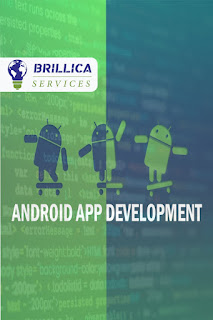What Is a Non-Fungible Token (NFT)?
Non-Fungible
Tokens (NFTs) are cryptographic assets on a Blockchain
Developer Ethereum with unique identification codes and metadata that
differentiate them from each other. Unlike cryptocurrencies, they can't be
traded or exchanged at equivalency. This differs from fungible tokens such as
cryptocurrencies, which are identical to each other and, therefore, can serve
as a medium for commercial transactions.
Know More About NFTs:
• NFTs are unique cryptographic tokens which exist on a blockchain
and cannot be duplicated.
• NFTs represents real-world items like artwork and real
estate.
• "Tokenizing" these real-world physical assets
makes buying, selling, and trading them more efficient while reducing the
probability of fraud.
• NFTs also functions to represent individuals' identities,
property rights, and much more.
The well defined construction of each NFT comes under The
Blockchain Developer Course has the potential for several use cases. For
instance, they are an ideal vehicle those digitally represent physical assets
such as real estate and artwork. As they are based on blockchains, NFTs can
also work to remove intermediaries and connect artists with audiences or for
identity management. NFTs can remove intermediaries, simplify transactions, and
make new markets.
In early March in the year 2021, a group of NFTs by digital
artist Beeple sold for over $69 million. The sale set a precedent and a record
for the most expensive pieces of digital art sold thus far. The artwork was a
collage consisted of Beeple's first 5,000 days of work.
The
Certified Blockchain Developer Ethereum certification course aims to help
programmers and developers to dig into developing smart contracts on the most
popular blockchain computing platform known as Ethereum, building Blockchain
applications and interact with them seamlessly.
Most of the current market for NFTs is centered around
collectibles, such as digital artwork, sports cards, and rarities. Perhaps, the
foremost hyped space is NBA Top Shot, an area to gather non-fungible tokenized
NBA moments in digital card form. Some of these cards have sold for many
dollars.
Lets Understand NFTs:
Like any physical money, cryptocurrencies are fungible,
meaning that they can be traded or exchanged, one for another. For instance,
one bitcoin is usually equal in value to a different bitcoin. Similarly, one
unit of ether is usually adequate to another unit. This fungibility
characteristic makes cryptocurrencies suitable as a secure medium of
transaction within the digital economy.
NFTs shift the crypto standard by making each token unique
and irreplaceable, thereby making it impossible for any non-fungible token to
be equal to another. They are also extensible, which means you can combine one
NFT with another to “breed” a third, unique NFT.
Just like Bitcoin, NFT also contains ownership details for
easy identification and transfer between token holders. Owners also can add
metadata or attributes concerning the asset in NFTs. For instance, tokens
representing coffee beans can be classified as fair trade. Or, artists can sign
their digital artwork with their own signature within the metadata.
NFTs evolved from the ERC-721 standard. Developed by a
number of an equivalent people liable for the ERC-20 smart contract, ERC-721
defines the minimum interface—ownership details, security, and
metadata—required for the exchange and distribution of gaming tokens. The
ERC-1155 standard takes the concept further by reducing the transaction and
storage costs required for NFTs and batching multiple sorts of non-fungible
tokens into one contract.
The official CBDE Certification curriculum imparting
in-depth understanding on how transactions are created and implemented on Ethereum
network is offered at Brillica
Services in diverse blended modes and at custom schedules to meet your
specific learning goals at affordable costs.
Follow for more: https://www.brillicaservices.com/


Comments
Post a Comment